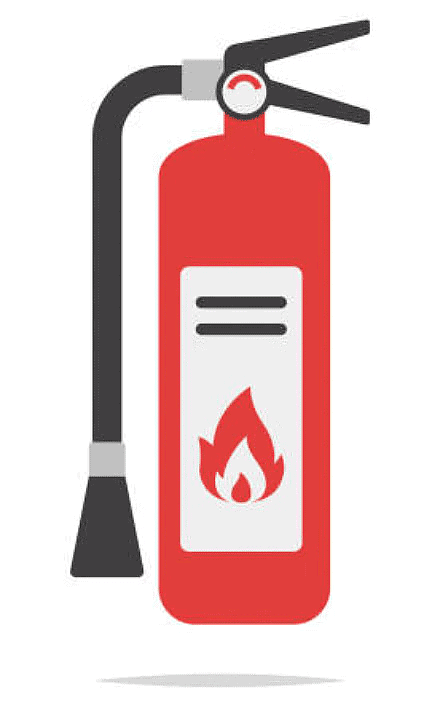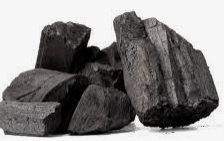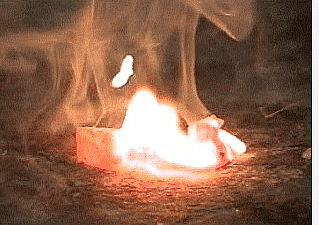Class 8 Science - Combustion and Flame CBSE Worksheets Solutions
| Table of contents |

|
| Multiple Choice Questions (MCQs) |

|
| Fill in the Blanks |

|
| True or False |

|
| Very Short Answer Questions |

|
Multiple Choice Questions (MCQs)
Q1: What is the main purpose of the ignition temperature in the combustion process?
A) It is the temperature at which a substance freezes.
B) It is the lowest temperature at which a substance catches fire.
C) It is the temperature at which a substance melts.
D) It is the highest temperature a substance can withstand before evaporating.
Ans. B) It is the lowest temperature at which a substance catches fire.
Q2: Why is water not suitable for controlling fire in the case of electrical equipment or oil?
A) Water is a good conductor of electricity and can harm the persons trying to control the fire.
B) Water is lighter than oil and cannot extinguish the fire effectively.
C) Water reacts with electrical equipment and oil, causing the fire to spread.
D) Water evaporates quickly when in contact with electrical equipment or oil.
Ans. A) Water is a good conductor of electricity and can harm the persons trying to control the fire.
Q3: Which type of combustion does not require an external energy source to initiate?
A) Rapid combustion
B) Spontaneous combustion
C) Explosion
D) Complete combustion
Ans. B) Spontaneous combustion
Q4: What is the role of carbon dioxide in fire extinguishing?

A) It supports combustion.
B) It dilutes the oxygen level and cools down the fuel.
C) It reacts with fire to produce water.
D) It increases the ignition temperature of the fuel.
Ans. B) It dilutes the oxygen level and cools down the fuel.
Q5: Which part of the candle flame is the hottest?
A) The inner part
B) The middle part
C) The outer part
D) All parts are equally hot
Ans. C) The outer part
Fill in the Blanks
Q1: A substance must reach its ignition temperature to undergo combustion.
Q2: Carbon dioxide does not support combustion and is used as a fire extinguisher.
Q3: The combustion of substances like wood or coal primarily produces heat and light.
Q4: Fire can be controlled by removing one or more of the essential conditions for combustion: fuel, oxygen, and ignition temperature.
Q5: In spontaneous combustion, a substance with a low ignition temperature gets heated until it spontaneously ignites.
True or False
Q1: The ignition temperature is the same for all substances.
Ans. False
Q2: Sodium bicarbonate, when heated, releases carbon dioxide which can extinguish fires.
Ans. True
Q3: Oil fires can be effectively controlled by pouring water on them.
Ans. False
Q4: Combustible substances can catch fire without reaching their ignition temperature.
Ans. False
Q5: Complete combustion happens when there is an unlimited supply of oxygen.
Ans. True
Very Short Answer Questions
Q1: What is meant by the calorific value of a fuel?
Ans: The amount of heat energy produced on complete combustion of 1 kg of a fuel is called its calorific value.
Q2: Name the unit in which the calorific value of a fuel is expressed.
Ans: The calorific value of a fuel is expressed in a unit called kilojoule per kg (kJ/kg).
Q3: Name some solid fuels.
Ans: wood, charcoal, coal, coke, and cow-dung cakes.
Coke
Q4: Name two substances having low ignition temperature.
Ans: Paper and white phosphorus
Q5: Can you burn a piece of wood by bringing a lighted matchstick near it? Explain.
Ans: The ignition temperature of a piece of wood is high which cannot be reached by the small heat produced by a burning matchstick. So, a matchstick cannot light (or burn) a piece of wood directly.
Q6: What is a combustible substance? Give some examples.
Ans: The substance that undergoes combustion is said to be a combustible substance. Some of the combustible substances are wood, coal, charcoal, paper, dry leaves, petrol, etc.
 CharcoalQ7: What causes global warming?
CharcoalQ7: What causes global warming?
Ans: Combustion of most fuels releases carbon dioxide into the environment. Increased concentration of carbon dioxide in the air is believed to cause global warming.
Global Warming
Q8: Why food is called fuel for our body?
Ans: Food is called fuel for our body because in our body food is broken down by reaction with oxygen and heat is produced.
Q9: What is an explosion? Explain with the help of an example.
Ans: When a cracker is ignited, a sudden reaction takes place with the evolution of heat, light and sound. A large amount of gas formed in the reaction is liberated. Such a reaction is called explosion. Explosion can also take place if pressure is applied on the cracker.
Explosion
Q10: What is spontaneous combustion? Give one example.
Ans: The type of combustion in which a material suddenly bursts into flames, without the application of any apparent cause is called spontaneous combustion. Example: Burning of white phosphorous on its own at room temperature.
 Spontaneous Combustion
Spontaneous Combustion
|
92 videos|296 docs|44 tests
|
FAQs on Class 8 Science - Combustion and Flame CBSE Worksheets Solutions
| 1. What is combustion? |  |
| 2. What are the three essential requirements for combustion to occur? |  |
| 3. How does the presence of a flame indicate combustion? |  |
| 4. What is the difference between complete combustion and incomplete combustion? |  |
| 5. How can combustion be controlled to prevent accidents? |  |





















